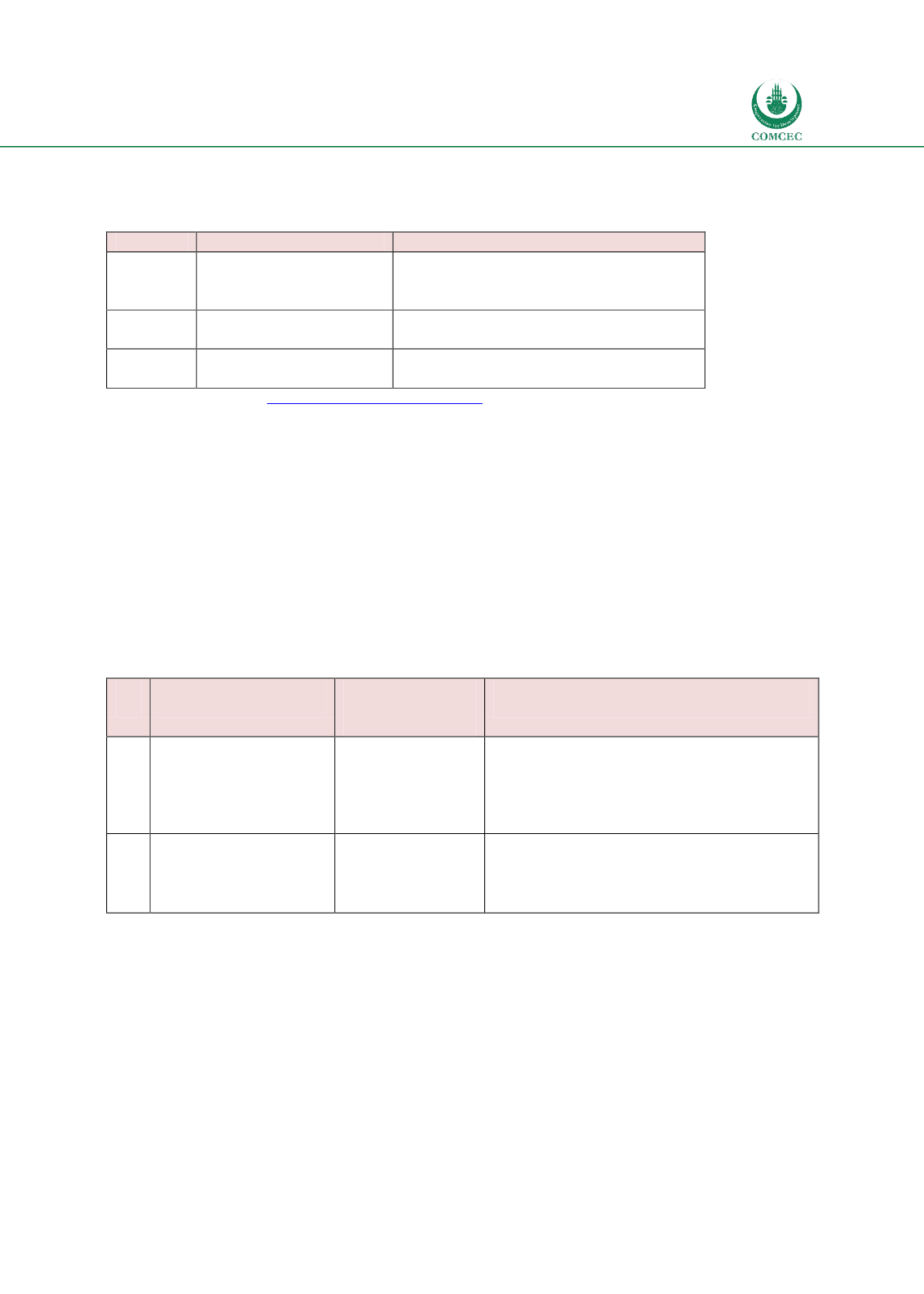

National and Global Islamic Financial Architecture:
Prolems and Possible Solutions for the OIC Member Countries
205
banking and takaful sectors are adequate, there is a need to come up with standards for Islamic
capital markets.
Table
6.13: IFSB Standards and Guidance Notes for Different Islamic Financial Sectors
Sectors
Risk Management
Regulations/ Supervision
Banking
IFSB-1, IFSB-13
IFSB-2, IFSB-5, IFSB-7, IFSB-15, IFSB-16,
IFSB-17
GN-1, GN-2, GN-3, GN-4
Takaful
IFSB-14
IFSB-11, IFSB-18,
GN-5
Capital
Markets
Source: IFSB (2015) an
d http://www.ifsb.org/published.php6.3.3.
Shari’ah Governance Framework
The Islamic Financial Services Board (IFSB-10) and Accounting & Auditing Organization for
Islamic Financial Institutions (AAOIFI) have published Shariah governance principles and
standards for Islamic financial institutions. As for developing Shariah standards and
parameters, Islamic Fiqh Academy (IsFA) has issued rulings on economic and financial matters
relevant for the Islamic financial sector. Accounting and Auditing Organization for Islamic
Financial Institutions (AAOIFI) has published 54 Shariah standards of different types of Islamic
financial contacts. International Islamic Financial Markets (IIFM) has also come up with Islamic
financial contracts and products templates related to the capital and money market, corporate
finance and trade finance.
Table
6.14: International Institutions Related to Shariah Governance
No. Institutional Elements Existing
Institutions
Role and Responsibilities
3.1
Legal/Regulatory
Requirement
for
Shariah
Governance
(SG)
IFSB
AAOIFI
Published Shariah governance standards
for Islamic financial institutions
3.3
Developing
Shariah
parameters/ standards
IsFA
AAOIFI
IIFM
Issue Islamic legal rulings/resolutions on
different issues including Islamic finance
Develop Shariah standards and
templates for Islamic financial products
6.3.4.
Liquidity Infrastructure
One of the problems of establishing a liquid international secondary market for Islamic
financial instruments are the differences of legal and regulatory regimes of various countries
and also the diversity of Shariah opinions across jurisdictions. Specifically sukuk structures
entail various supporting laws such as property, tax, bankruptcy, trust, etc. However, the
differences in common law and civil law legal systems and legal institutions and across OIC
member countries makes it difficult to come up with unified sukuk structures that satisfy the
individual national legal frameworks and requirements (Karim 2015: 228). Similarly,
perspectives on Shariah compliant sukuk structures also differ from one jurisdiction to
another. This reduces the marketability of sukuk globally making them relatively illiquid.
















